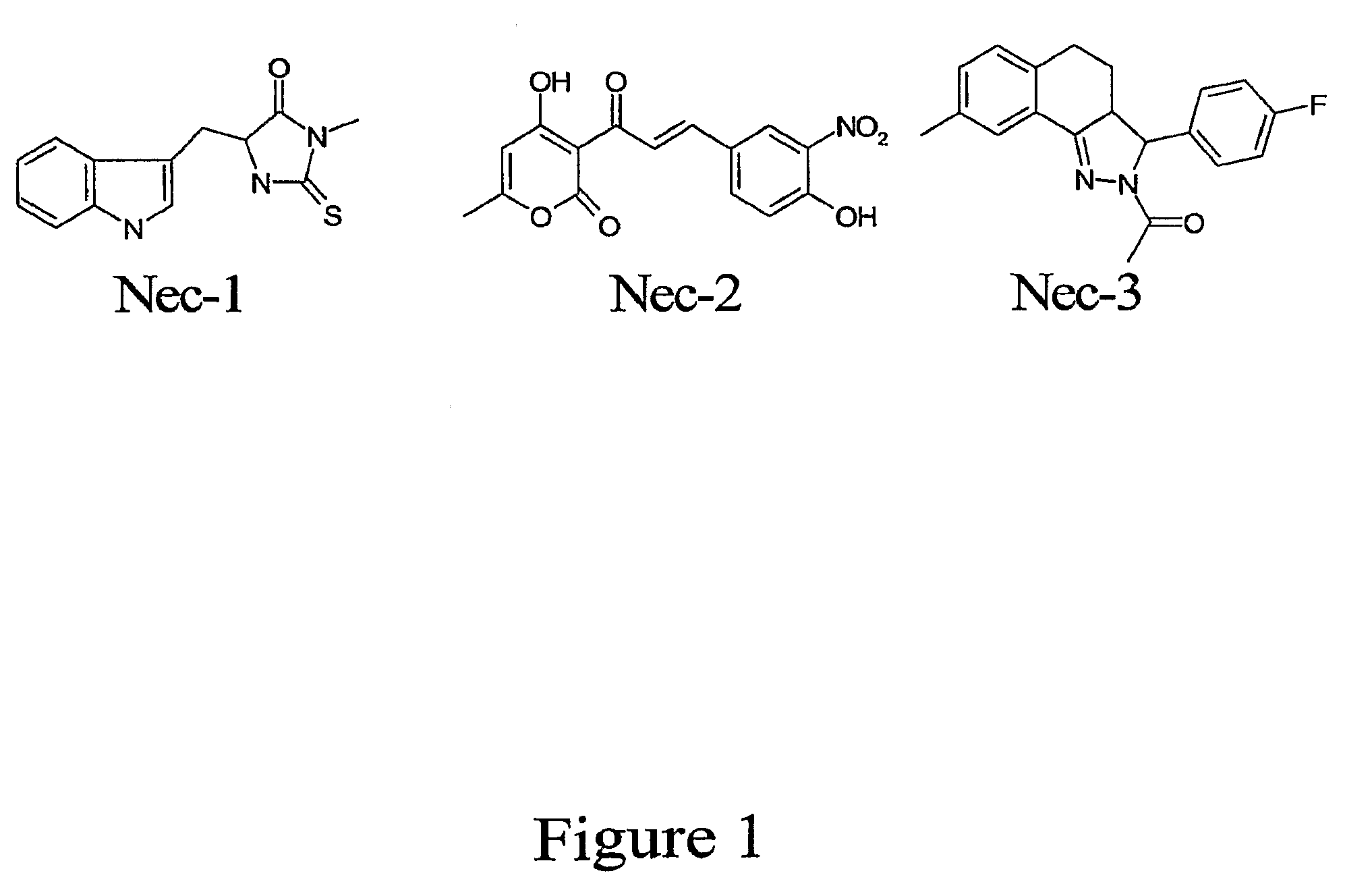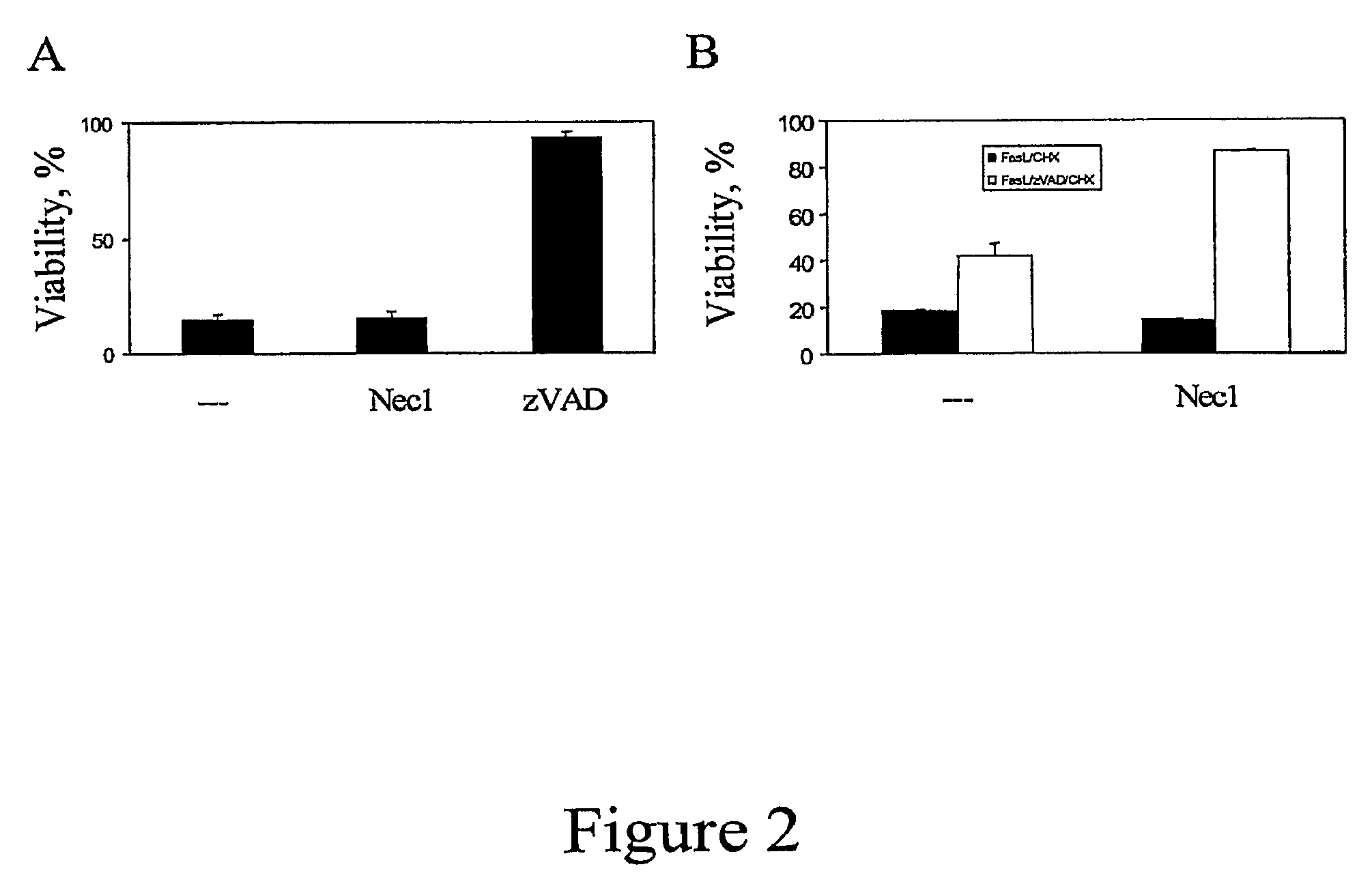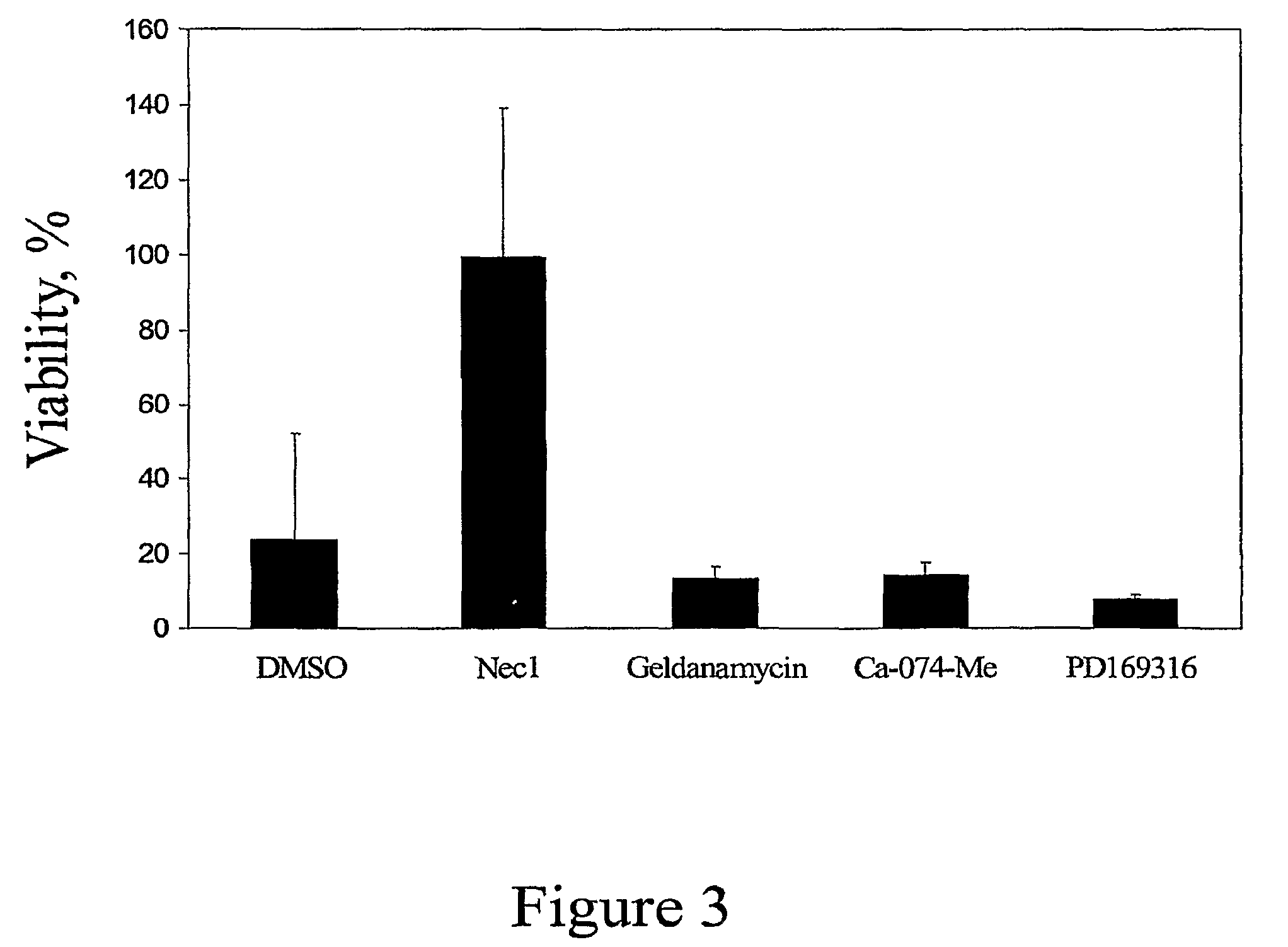Tricyclic necrostatin compounds
a technology of necrostatin and compound, which is applied in the field of tricyclic necrostatin compounds, can solve the problems of not being able to control necrosis as well as is known, and achieve the effects of decreasing necrosis, reducing the number of cells, and decreasing necrosis
- Summary
- Abstract
- Description
- Claims
- Application Information
AI Technical Summary
Benefits of technology
Problems solved by technology
Method used
Image
Examples
example 1
Characterization of Small Molecule Inhibitors of CICD / Necroptosis
[0355]Using a known paradigm of death receptor mediated caspase-independent cell death in human U937 cells, we established a high-throughput screen in 384 well format for small molecule inhibitors of caspase-independent cell death (CICD). In this system, U937 cells were induced to undergo CICD in the presence of TNFα and zVAD.fmk, and the rate of cell death was determined by an ATP-Lite-M assay, a commercial luminescence-based assay measuring cellular ATP levels (Packard). U937 cells were chosen because these cells can be induced to undergo CICD very efficiently upon TNFα / zVAD treatment in the absence of additional, stress-inducing sensitizing stimuli, such as CHX, making this system perfectly suited for reliable identification of CICD inhibitors. Furthermore, rapid suspension growth kinetics of U937 cells results in the availability of large quantities of cells, which translates into robust signals ideal for high thro...
example 2
Medicinal Chemistry Study of Necrostatins
[0367]Systematic modifications of the original high-throughput screening hit, Nec-1 (methylthiohydantoin-tryptophane, MTH-Trp) (EC50=494 nM), were performed in order to improve its efficacy, reduce its toxicity and to increase its metabolic stability (FIG. 6). Initially, the thiohydantoin portion of the molecule was not changed. Instead, various modifications to the indole ring were investigated. The indole ring was replaced with a benzothiophene, a benzene ring, and a pyridine. However, all of these changes were detrimental to the molecule's activity. Next, a survey of various substituents on the indole ring was conducted. We discovered that introduction of small electron-neutral (i.e. methyl), electron-donating (i.e. methoxy), or electron-withdrawing (i.e. chloride) groups to the 7-position of the indole ring increased anti-CICD activity. For example, the 7-chloro derivative, 7-Cl-Neo-1, had the highest activity among these derivatives with...
example 3
In vivo Efficacy of Nec-1 Derivatives in a Mouse Model of Ischemic Brain Injury
[0369]Studies were performed on the effect of Nec-1 derivatives in the mouse two-hour middle cerebral artery occlusion (MCAO) / reperfusion model of brain ischemia. A significant dose-dependent decrease in infarction volume and behavioral changes (associated with ischemic injury) were detected upon icy injection (FIG. 9).
[0370]Injection of 7-Cl-Nec-1 up to six hours after the onset of brain ischemic injury still offered protection (FIG. 10A), which exceeds the therapeutic window reported for the majority of the currently pursued drug candidate classes, including inhibitors of excitotoxicity (e.g., MK-801, a glutamate receptor antagonist, stops working if administered after one hour post-occlusion) and apoptosis (zVAD.fmk is effective up to three hours postocclusion) using the two-hour ischemia-reperfusion model following MCA occlusion. Induction of both apoptosis and necrosis during ischemic brain injury pr...
PUM
| Property | Measurement | Unit |
|---|---|---|
| concentrations | aaaaa | aaaaa |
| concentrations | aaaaa | aaaaa |
| time | aaaaa | aaaaa |
Abstract
Description
Claims
Application Information
 Login to View More
Login to View More - R&D
- Intellectual Property
- Life Sciences
- Materials
- Tech Scout
- Unparalleled Data Quality
- Higher Quality Content
- 60% Fewer Hallucinations
Browse by: Latest US Patents, China's latest patents, Technical Efficacy Thesaurus, Application Domain, Technology Topic, Popular Technical Reports.
© 2025 PatSnap. All rights reserved.Legal|Privacy policy|Modern Slavery Act Transparency Statement|Sitemap|About US| Contact US: help@patsnap.com



